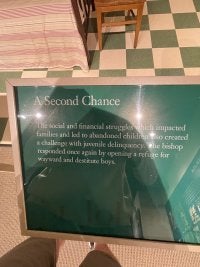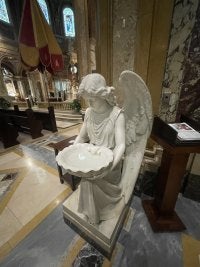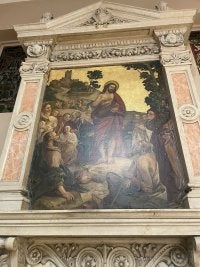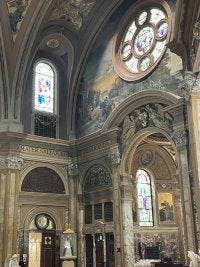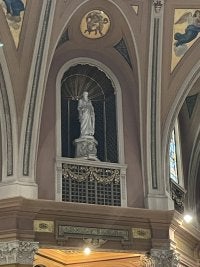Joined Dec 2015
6,662 Posts | 1,295+
Buffalo, NY
Last edited:
Well, a family member of mine was recently in town visiting and we were going to get some lunch and I happen to drive by the Our .... of Victory National Shrine & Basilica…. Which surely is the most prominent and historic church in all of the greater Buffalo . For its architecture for its history. I said we should stop by there he agreed. It was actually the first time I went inside this church in probably 25 years. I completely forgot how large it was. It seems like something you would see perhaps in Europe.
The basilica was completed in 1926. Replacing a previous church that had extensive fire damage. The famous Father Nelson Baker raised the funds required for the basilica…Baker was well known for taking in orphans and juvenile boys off the streets and into a reform school… and for supplying shelter to homeless mothers all regardless of their color or faith…
What is quite interesting about the basilica is in the 1920s it utilized artists and sculptors from both the United States and Europe. Perhaps we can see this in the interior and exterior design of the church. Now to me, this is just my opinion I’m looking at the the structure It reminds me of something out of the Roman empire. Perhaps the Holy Roman Empire Looking at the Colonnades, arches and marble of the basilica, as well as the vaulted ceiling inside of the church with various paintings adorning the ceiling. At the main altar of the basilica is a 16,000 pound statue of our .... of victory, which was in fact blessed by Pope Pius XI ….
So after randomly visiting the Basilica today, I decided to share some information about its background on this form and also some pictures I took.
Now all throughout the basilica are various forms of architecture that frankly I don’t know much about. I’m going to go ahead and post pictures that I took today at the Basilica and if something stands out to one of the posters here, please provide your remarks on it tell us what it is or perhaps what it means to you.
The pictures perhaps do not do justice being inside of the church is really an extraordinary thing. Just the sheer size of it and the vaulted ceilings is quite interesting. In someway reminded me of visiting the Angkor Wat temple in Cambodia which is very stunning to merely look at its pictures…but when one visits personally it’s even more impressive.
The basilica was completed in 1926. Replacing a previous church that had extensive fire damage. The famous Father Nelson Baker raised the funds required for the basilica…Baker was well known for taking in orphans and juvenile boys off the streets and into a reform school… and for supplying shelter to homeless mothers all regardless of their color or faith…
What is quite interesting about the basilica is in the 1920s it utilized artists and sculptors from both the United States and Europe. Perhaps we can see this in the interior and exterior design of the church. Now to me, this is just my opinion I’m looking at the the structure It reminds me of something out of the Roman empire. Perhaps the Holy Roman Empire Looking at the Colonnades, arches and marble of the basilica, as well as the vaulted ceiling inside of the church with various paintings adorning the ceiling. At the main altar of the basilica is a 16,000 pound statue of our .... of victory, which was in fact blessed by Pope Pius XI ….
So after randomly visiting the Basilica today, I decided to share some information about its background on this form and also some pictures I took.
Now all throughout the basilica are various forms of architecture that frankly I don’t know much about. I’m going to go ahead and post pictures that I took today at the Basilica and if something stands out to one of the posters here, please provide your remarks on it tell us what it is or perhaps what it means to you.
The pictures perhaps do not do justice being inside of the church is really an extraordinary thing. Just the sheer size of it and the vaulted ceilings is quite interesting. In someway reminded me of visiting the Angkor Wat temple in Cambodia which is very stunning to merely look at its pictures…but when one visits personally it’s even more impressive.




